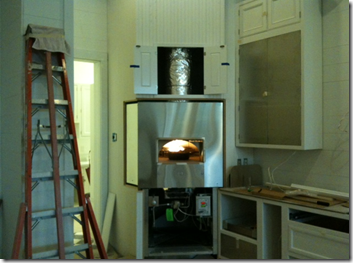I had a chance to talk to
Rob McKernan, President, Americas, Schneider Electric IT Business
John Lee, CEO and Chairman, Lee Technologies
Bob Woolley, Senior Vice President, Critical Environment Services, Lee Technologies
about the press release Schneider Electric released on the acquisition of Lee Technologies.
The first thing we covered is the introductions. I've had the pleasure of having lengthy conversations with John Lee and Bob Woolley. Rob McKernan and I had not met and one of the first things we started discussing is my custom house project and my new Woodstone pizza oven. My oven is the Chuckanut 4' diameter, 2,500 lbs, 115,000 btu.
Where the first thing I was cooked was a roast chicken.
Some things can be done much better when you get the right technology with a good process. For fun I like to cook (process), and my pizza oven is my new tool.
Lee Technologies has been able to upgrade its data center capabilities now that it has access to the tools Schneider Electric brings. And, Schneider Electric has picked up a bunch of skilled data center chefs who know how to operate data centers. What are the potential results?
- Top of the list is reducing the energy used in data centers. As the Google guys have shared the initial commissioning starts the process to optimize the performance and as load is accumulated, the process continues to improve energy efficiency. Reducing energy beyond the simple things of hot/cold aisle containment, requires more resources and sharing information across teams. Schneider Electric and Lee Technologies are one example of a team who can support more complex energy saving projects.
- Products with processes. Processes aligned with products. Lee Technologies has the operations process expertise. Schneider Electric has the products. As one data center executive shared with me, you can talk about any of the products I have in the data center, but you can't talk about how we integrate the products. The integration is our intellectual property and how we are better than most.
- Condition Based Management (CBM) is becoming a standard in some industries, but is rarely discussed in data centers. Taking the maintenance information (Lee Tech) and creating a feedback loop to products (Schneider Electric) is part of a CBM solution.
- It is Department of Defense policy that condition-based maintenance (CBM) be "implemented to improve maintenance agility and responsiveness, increase operational availability, and reduce life cycle total ownership costs"
- Take all these ideas and expand into emerging markets - South America, APAC, Africa, and Middle East.
BTW, John Lee is on my list of visitors to see my new pizza oven. It's great when we can talk food, wine, and data centers. And, best of all be at home.



